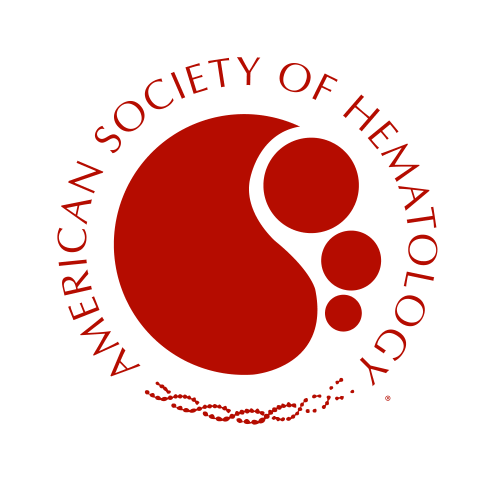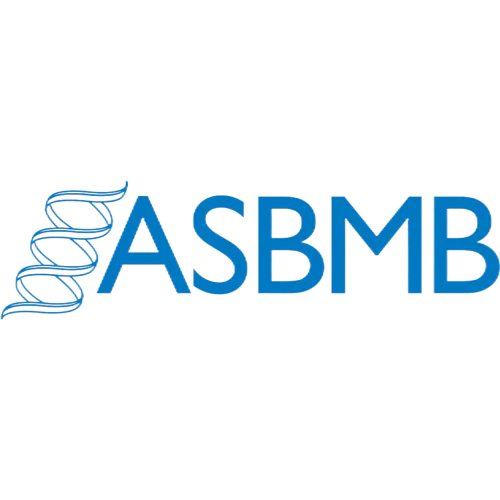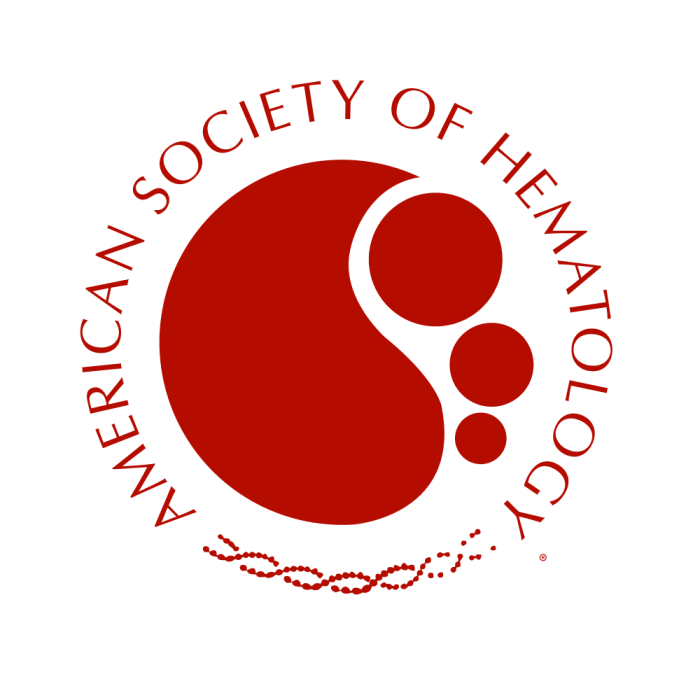Blood, volume 133, issue 12, pages 1308-1312
Posttranscriptional modulation of TERC by PAPD5 inhibition rescues hematopoietic development in dyskeratosis congenita.
Fok Wilson Chun
1
,
Shukla Siddharth
2
,
Vessoni Alexandre Teixeira
1
,
Brenner Kirsten Ann
1
,
Parker Roy
2, 3
,
Sturgeon Christopher M
1, 4, 5
,
Batista Luis Francisco Zirnberger
1, 4, 5
1
Division of Hematology, Department of Medicine, and
2
Department of Biochemistry, University of Colorado Boulder, Boulder, CO;
|
3
Howard Hughes Medical Institute, Chevy Chase, MD; and
|
4
Department of Developmental Biology and
5
Center of Regenerative Medicine, Washington University in St. Louis, St. Louis, MO
Publication type: Journal Article
Publication date: 2019-03-21
PubMed ID:
30728146
Biochemistry
Cell Biology
Immunology
Hematology
Abstract
Reduced levels of TERC, the telomerase RNA component, cause dyskeratosis congenita (DC) in patients harboring mutations in TERC, PARN, NOP10, NHP2, NAF1, or DKC1. Inhibition of the noncanonical poly(A) polymerase PAPD5, or the exosome RNA degradation complex, partially restores TERC levels in immortalized DKC1 mutant cells, but it remains unknown if modulation of posttranscriptional processing of TERC could improve hematopoietic output in DC. We used human embryonic stem cells (hESCs) with a common dyskerin mutation (DKC1_A353V), which have defective telomere maintenance and reduced definitive hematopoietic potential, to understand the effects of reducing EXOSC3 activity, or silencing PAPD5-mediated oligoadenylation, on hematopoietic progenitor specification and function in DC. Reduction of EXOSC3 or PAPD5 levels in DKC1 mutant hESCs led to functional improvements in TERC levels and telomerase activity, with concomitant telomere elongation and reduced levels of DNA damage signaling. Interestingly, the silencing of PAPD5, but not EXOSC3, significantly restored definitive hematopoietic potential in DKC1 mutant cells. Mechanistically, we show that PAPD5 inhibition is sustained in differentiated CD34+ cells, with a concomitant increase in mature, functional, forms of TERC, indicating that regulation of PAPD5 is a potential strategy to reverse hematologic dysfunction in DC patients.
Citations by journals
|
1
2
3
|
|
|
Nucleic Acids Research

|

Nucleic Acids Research
3 publications, 11.11%
|
|
Blood

|

Blood
2 publications, 7.41%
|
|
Biomedicines

|

Biomedicines
1 publication, 3.7%
|
|
Hepatology

|

Hepatology
1 publication, 3.7%
|
|
Pharmaceutical patent analyst
|
Pharmaceutical patent analyst, 1, 3.7%
Pharmaceutical patent analyst
1 publication, 3.7%
|
|
Science

|

Science
1 publication, 3.7%
|
|
Nature Reviews Genetics

|

Nature Reviews Genetics
1 publication, 3.7%
|
|
npj Genomic Medicine

|

npj Genomic Medicine
1 publication, 3.7%
|
|
Nature Reviews Molecular Cell Biology

|

Nature Reviews Molecular Cell Biology
1 publication, 3.7%
|
|
Trends in Molecular Medicine

|

Trends in Molecular Medicine
1 publication, 3.7%
|
|
Blood advances

|

Blood advances
1 publication, 3.7%
|
|
Cell Reports

|

Cell Reports
1 publication, 3.7%
|
|
Cell Stem Cell

|

Cell Stem Cell
1 publication, 3.7%
|
|
Mayo Clinic Proceedings

|

Mayo Clinic Proceedings
1 publication, 3.7%
|
|
Trends in Pharmacological Sciences

|

Trends in Pharmacological Sciences
1 publication, 3.7%
|
|
Journal of Biological Chemistry

|

Journal of Biological Chemistry
1 publication, 3.7%
|
|
Antiviral Research

|

Antiviral Research
1 publication, 3.7%
|
|
FEBS Letters

|

FEBS Letters
1 publication, 3.7%
|
|
Cell Cycle

|

Cell Cycle
1 publication, 3.7%
|
|
RNA Biology

|

RNA Biology
1 publication, 3.7%
|
|
Stem Cells

|

Stem Cells
1 publication, 3.7%
|
|
Clinical Cancer Research

|

Clinical Cancer Research
1 publication, 3.7%
|
|
RNA

|

RNA
1 publication, 3.7%
|
|
1
2
3
|
Citations by publishers
|
1
2
3
4
5
6
|
|
|
Elsevier

|

Elsevier
6 publications, 22.22%
|
|
Oxford University Press

|

Oxford University Press
4 publications, 14.81%
|
|
Springer Nature

|

Springer Nature
3 publications, 11.11%
|
|
American Society of Hematology

|

American Society of Hematology
3 publications, 11.11%
|
|
Wiley

|

Wiley
2 publications, 7.41%
|
|
Taylor & Francis

|

Taylor & Francis
2 publications, 7.41%
|
|
Multidisciplinary Digital Publishing Institute (MDPI)

|

Multidisciplinary Digital Publishing Institute (MDPI)
1 publication, 3.7%
|
|
Future Science
|
Future Science, 1, 3.7%
Future Science
1 publication, 3.7%
|
|
American Association for the Advancement of Science (AAAS)

|

American Association for the Advancement of Science (AAAS)
1 publication, 3.7%
|
|
American Society for Biochemistry and Molecular Biology

|

American Society for Biochemistry and Molecular Biology
1 publication, 3.7%
|
|
American Association for Cancer Research (AACR)

|

American Association for Cancer Research (AACR)
1 publication, 3.7%
|
|
Cold Spring Harbor Laboratory

|

Cold Spring Harbor Laboratory
1 publication, 3.7%
|
|
1
2
3
4
5
6
|
- We do not take into account publications that without a DOI.
- Statistics recalculated only for publications connected to researchers, organizations and labs registered on the platform.
- Statistics recalculated weekly.
{"yearsCitations":{"type":"bar","data":{"show":true,"labels":[2019,2020,2021,2022,2023],"ids":[0,0,0,0,0],"codes":[0,0,0,0,0],"imageUrls":["","","","",""],"datasets":[{"label":"Citations number","data":[2,11,5,8,1],"backgroundColor":["#3B82F6","#3B82F6","#3B82F6","#3B82F6","#3B82F6"],"percentage":["7.41","40.74","18.52","29.63","3.7"],"barThickness":null}]},"options":{"indexAxis":"x","maintainAspectRatio":true,"scales":{"y":{"ticks":{"precision":0,"autoSkip":false,"font":{"family":"Montserrat"},"color":"#000000"}},"x":{"ticks":{"stepSize":1,"precision":0,"font":{"family":"Montserrat"},"color":"#000000"}}},"plugins":{"legend":{"position":"top","labels":{"font":{"family":"Montserrat"},"color":"#000000"}},"title":{"display":true,"text":"Citations per year","font":{"size":24,"family":"Montserrat","weight":600},"color":"#000000"}}}},"journals":{"type":"bar","data":{"show":true,"labels":["Nucleic Acids Research","Blood","Biomedicines","Hepatology","Pharmaceutical patent analyst","Science","Nature Reviews Genetics","npj Genomic Medicine","Nature Reviews Molecular Cell Biology","Trends in Molecular Medicine","Blood advances","Cell Reports","Cell Stem Cell","Mayo Clinic Proceedings","Trends in Pharmacological Sciences","Journal of Biological Chemistry","Antiviral Research","FEBS Letters","Cell Cycle","RNA Biology","Stem Cells","Clinical Cancer Research","RNA"],"ids":[23904,6594,24421,6346,19778,7711,13955,18368,10207,1260,7547,9130,13752,3659,1752,19451,22274,405,16553,7613,17679,6723,12892],"codes":[0,0,0,0,0,0,0,0,0,0,0,0,0,0,0,0,0,0,0,0,0,0,0],"imageUrls":["\/storage\/images\/resized\/yNSijlgQghQF53VZuyFLA30CKDe4j3HK74Vtpnxa_medium.webp","\/storage\/images\/resized\/QMhhcrIUiVtFnND3WWZ7hIbu6GYeoRoA2zoVsMEX_medium.webp","\/storage\/images\/resized\/MjH1ITP7lMYGxeqUZfkt2BnVLgjkk413jwBV97XX_medium.webp","\/storage\/images\/resized\/bRyGpdm98BkAUYiK1YFNpl5Z7hPu6Gd87gbIeuG3_medium.webp","","\/storage\/images\/resized\/s10mcsCV4OAUg9O2KrqOquQC0PhyLMI8hUUkuflM_medium.webp","\/storage\/images\/resized\/voXLqlsvTwv5p3iMQ8Dhs95nqB4AXOG7Taj7G4ra_medium.webp","\/storage\/images\/resized\/voXLqlsvTwv5p3iMQ8Dhs95nqB4AXOG7Taj7G4ra_medium.webp","\/storage\/images\/resized\/voXLqlsvTwv5p3iMQ8Dhs95nqB4AXOG7Taj7G4ra_medium.webp","\/storage\/images\/resized\/GDnYOu1UpMMfMMRV6Aqle4H0YLLsraeD9IP9qScG_medium.webp","\/storage\/images\/resized\/QMhhcrIUiVtFnND3WWZ7hIbu6GYeoRoA2zoVsMEX_medium.webp","\/storage\/images\/resized\/GDnYOu1UpMMfMMRV6Aqle4H0YLLsraeD9IP9qScG_medium.webp","\/storage\/images\/resized\/GDnYOu1UpMMfMMRV6Aqle4H0YLLsraeD9IP9qScG_medium.webp","\/storage\/images\/resized\/GDnYOu1UpMMfMMRV6Aqle4H0YLLsraeD9IP9qScG_medium.webp","\/storage\/images\/resized\/GDnYOu1UpMMfMMRV6Aqle4H0YLLsraeD9IP9qScG_medium.webp","\/storage\/images\/resized\/OuA6WPZekwEiUM99mP2pSqj4yHPxHezM6xgLhAjO_medium.webp","\/storage\/images\/resized\/GDnYOu1UpMMfMMRV6Aqle4H0YLLsraeD9IP9qScG_medium.webp","\/storage\/images\/resized\/bRyGpdm98BkAUYiK1YFNpl5Z7hPu6Gd87gbIeuG3_medium.webp","\/storage\/images\/resized\/5YZtvLvkPZuc2JHOaZsjCvGSHFCuC3drUwN3YAc5_medium.webp","\/storage\/images\/resized\/5YZtvLvkPZuc2JHOaZsjCvGSHFCuC3drUwN3YAc5_medium.webp","\/storage\/images\/resized\/yNSijlgQghQF53VZuyFLA30CKDe4j3HK74Vtpnxa_medium.webp","\/storage\/images\/resized\/cfuVw6XIq2mATDNJdXiose3W8qYbkmaVSpHoP8XL_medium.webp","\/storage\/images\/resized\/hg4jJjT8wVGtHstBCc0zk465Mg9pLx3G4odCDOqE_medium.webp"],"datasets":[{"label":"","data":[3,2,1,1,1,1,1,1,1,1,1,1,1,1,1,1,1,1,1,1,1,1,1],"backgroundColor":["#3B82F6","#3B82F6","#3B82F6","#3B82F6","#3B82F6","#3B82F6","#3B82F6","#3B82F6","#3B82F6","#3B82F6","#3B82F6","#3B82F6","#3B82F6","#3B82F6","#3B82F6","#3B82F6","#3B82F6","#3B82F6","#3B82F6","#3B82F6","#3B82F6","#3B82F6","#3B82F6"],"percentage":[11.11,7.41,3.7,3.7,3.7,3.7,3.7,3.7,3.7,3.7,3.7,3.7,3.7,3.7,3.7,3.7,3.7,3.7,3.7,3.7,3.7,3.7,3.7],"barThickness":13}]},"options":{"indexAxis":"y","maintainAspectRatio":false,"scales":{"y":{"ticks":{"precision":0,"autoSkip":false,"font":{"family":"Montserrat"},"color":"#000000"}},"x":{"ticks":{"stepSize":null,"precision":0,"font":{"family":"Montserrat"},"color":"#000000"}}},"plugins":{"legend":{"position":"top","labels":{"font":{"family":"Montserrat"},"color":"#000000"}},"title":{"display":true,"text":"Journals","font":{"size":24,"family":"Montserrat","weight":600},"color":"#000000"}}}},"publishers":{"type":"bar","data":{"show":true,"labels":["Elsevier","Oxford University Press","Springer Nature","American Society of Hematology","Wiley","Taylor & Francis","Multidisciplinary Digital Publishing Institute (MDPI)","Future Science","American Association for the Advancement of Science (AAAS)","American Society for Biochemistry and Molecular Biology","American Association for Cancer Research (AACR)","Cold Spring Harbor Laboratory"],"ids":[17,19,8,2252,11,18,202,5592,189,2090,2286,6909],"codes":[0,0,0,0,0,0,0,0,0,0,0,0],"imageUrls":["\/storage\/images\/resized\/GDnYOu1UpMMfMMRV6Aqle4H0YLLsraeD9IP9qScG_medium.webp","\/storage\/images\/resized\/yNSijlgQghQF53VZuyFLA30CKDe4j3HK74Vtpnxa_medium.webp","\/storage\/images\/resized\/voXLqlsvTwv5p3iMQ8Dhs95nqB4AXOG7Taj7G4ra_medium.webp","\/storage\/images\/resized\/QMhhcrIUiVtFnND3WWZ7hIbu6GYeoRoA2zoVsMEX_medium.webp","\/storage\/images\/resized\/bRyGpdm98BkAUYiK1YFNpl5Z7hPu6Gd87gbIeuG3_medium.webp","\/storage\/images\/resized\/5YZtvLvkPZuc2JHOaZsjCvGSHFCuC3drUwN3YAc5_medium.webp","\/storage\/images\/resized\/MjH1ITP7lMYGxeqUZfkt2BnVLgjkk413jwBV97XX_medium.webp","","\/storage\/images\/resized\/s10mcsCV4OAUg9O2KrqOquQC0PhyLMI8hUUkuflM_medium.webp","\/storage\/images\/resized\/OuA6WPZekwEiUM99mP2pSqj4yHPxHezM6xgLhAjO_medium.webp","\/storage\/images\/resized\/cfuVw6XIq2mATDNJdXiose3W8qYbkmaVSpHoP8XL_medium.webp","\/storage\/images\/resized\/hg4jJjT8wVGtHstBCc0zk465Mg9pLx3G4odCDOqE_medium.webp"],"datasets":[{"label":"","data":[6,4,3,3,2,2,1,1,1,1,1,1],"backgroundColor":["#3B82F6","#3B82F6","#3B82F6","#3B82F6","#3B82F6","#3B82F6","#3B82F6","#3B82F6","#3B82F6","#3B82F6","#3B82F6","#3B82F6"],"percentage":[22.22,14.81,11.11,11.11,7.41,7.41,3.7,3.7,3.7,3.7,3.7,3.7],"barThickness":13}]},"options":{"indexAxis":"y","maintainAspectRatio":false,"scales":{"y":{"ticks":{"precision":0,"autoSkip":false,"font":{"family":"Montserrat"},"color":"#000000"}},"x":{"ticks":{"stepSize":null,"precision":0,"font":{"family":"Montserrat"},"color":"#000000"}}},"plugins":{"legend":{"position":"top","labels":{"font":{"family":"Montserrat"},"color":"#000000"}},"title":{"display":true,"text":"Publishers","font":{"size":24,"family":"Montserrat","weight":600},"color":"#000000"}}}}}
Metrics
Cite this
GOST |
RIS |
BibTex |
MLA
Cite this
GOST
Copy
Fok W. C. et al. Posttranscriptional modulation of TERC by PAPD5 inhibition rescues hematopoietic development in dyskeratosis congenita. // Blood. 2019. Vol. 133. No. 12. pp. 1308-1312.
GOST all authors (up to 50)
Copy
Fok W. C., Shukla S., Vessoni A. T., Brenner K. A., Parker R., Sturgeon C. M., Batista L. F. Z. Posttranscriptional modulation of TERC by PAPD5 inhibition rescues hematopoietic development in dyskeratosis congenita. // Blood. 2019. Vol. 133. No. 12. pp. 1308-1312.
Cite this
RIS
Copy
TY - JOUR
DO - 10.1182/blood-2018-11-885368
UR - https://doi.org/10.1182%2Fblood-2018-11-885368
TI - Posttranscriptional modulation of TERC by PAPD5 inhibition rescues hematopoietic development in dyskeratosis congenita.
T2 - Blood
AU - Fok, Wilson Chun
AU - Shukla, Siddharth
AU - Vessoni, Alexandre Teixeira
AU - Brenner, Kirsten Ann
AU - Parker, Roy
AU - Sturgeon, Christopher M
AU - Batista, Luis Francisco Zirnberger
PY - 2019
DA - 2019/03/21 00:00:00
PB - American Society of Hematology
SP - 1308-1312
IS - 12
VL - 133
PMID - 30728146
SN - 0006-4971
SN - 1528-0020
ER -
Cite this
BibTex
Copy
@article{2019_Fok,
author = {Wilson Chun Fok and Siddharth Shukla and Alexandre Teixeira Vessoni and Kirsten Ann Brenner and Roy Parker and Christopher M Sturgeon and Luis Francisco Zirnberger Batista},
title = {Posttranscriptional modulation of TERC by PAPD5 inhibition rescues hematopoietic development in dyskeratosis congenita.},
journal = {Blood},
year = {2019},
volume = {133},
publisher = {American Society of Hematology},
month = {mar},
url = {https://doi.org/10.1182%2Fblood-2018-11-885368},
number = {12},
pages = {1308--1312},
doi = {10.1182/blood-2018-11-885368}
}
Cite this
MLA
Copy
Fok, Wilson Chun, et al. “Posttranscriptional modulation of TERC by PAPD5 inhibition rescues hematopoietic development in dyskeratosis congenita..” Blood, vol. 133, no. 12, Mar. 2019, pp. 1308-1312. https://doi.org/10.1182%2Fblood-2018-11-885368.
